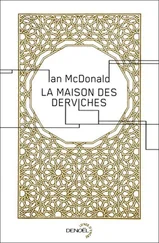Raja of shit.
“Come on, we’ve got a car to pick up.”
Hand over hand, Lisa Durnau hauls herself up the tunnel into the heart of the asteroid. The shaft is little wider than her body, the vacuum suits are white and clinging, and Lisa Durnau cannot get the thought out of her head that she is a NASA sperm swimming up a cosmic yoni. She pulls herself up the white nylon rope after Sam Rainey’s receding gripsoles. The project director’s feet come to a halt. She pushes back against a knot on the rope and floats, halfway up a stone vagina, a quarter of a million miles from home. A robot manipulator arm squeezes past her on its way down from the core, outstretched and creeping on little manipulator fingers. Lisa flinches as it brushes past her compression suit. Japanese King Crabs are a childhood horror; things chitinous and spindly. She used to dream of pulling back the bed cover and finding one lying there, pincers weaving up towards her face.
“What’s the delay?”
“There’s a turning hollow. From here on, you’ll begin to feel the effects of gravity. You don’t want to be heading facedown.”
“This Tabernacle doofus has its own gravity field?”
Sam Rainey’s feet tuck up, he vanishes into the gloom between the lume tubes. Lisa sees vague whiteness tumbling and manoeuvring, then his face looks through its visor into hers.
“Just be careful not to get your arms trapped where you can’t use them.”
Lisa Durnau gingerly draws herself up into the turning space. It’s just wide enough to fit a hunched body in a vacuum suit and, as Sam warns, get yourself inextricably trapped. She grimaces at the rock grating on her shoulders.
It’s all been cramming and jamming and slamming since she was excreted through the pressure lock into Darnley 285 Excavation Headquarters. If ISS had smelled rancid, Darnley Base was that distilled and casked for a year. Darnley was an unstable trinity of space scientists, archaeologists, and oil rats from the Alaska north slope. Darnley’s greatest surprise was what the drill-crews discovered when their bits punched through raw rock and the spycams were lowered in. It was not a propulsion system, a mythical space-drive. It was altogether other.
The suit she had been given was a tight-fitting skin, a microweave smaller than a molecule of oxygen, flexible enough to move in the confined spaces of Darnley’s interior, yet with the strength to maintain a human body against vacuum. Lisa had clung, still vertiginous from the transfer from the shuttle, to a handhold in the pressure lock as she felt the white fabric press ever-tighter against her skin and one by one the crew upended themselves and dived down the rabbit hole that was the entrance to the rock. Then it was her turn to fight the claustrophobia and go down into the shaft. Clocks were ticking. She had forty-five minutes to get in, get done with whatever it was dwelt in the heart of Darnley 285, get out, and get on to Captain Pilot Beth’s shuttle before she made turnaround.
In the gullet of the asteroid, Lisa Durnau folds her arms across her chest, pulls up her legs, and neatly somersaults. Pushing herself down the rope she feels a little extra assistance pulling at her feet. Now there is a distinct sensation of down and up and her stomach starts to gurgle as it reverts to its natural orientation. She glances between her feet. Sam Rainey’s head fills the shaft; around it is a halo. There’s light down there.
A few hundred knots downshaft and she can kick off and glide in hundred-metre swoops. Lisa whoops. She finds microgee more exhilarating and liberating than bloated, nauseous free fall.
“Don’t forget, you have to come back up again,” Sam says.
Five more minutes down and the light is a bright silver shine. Lisa’s body says half a gravity and getting stronger by the metre. Her mind rebels at the outrage of weight in absolute vacuum. Suddenly Sam’s head vanishes. She clings fingers and toes to the wall and squints through her feet into a disk of silver light. She thinks she sees a spider web of ropes and cables.
“Sam?”
“Climb down until you see a rope ladder. Grab a good hold of that, you’ll see me.”
Feet first, in a too-tight sperm-suit, Lisa Durnau enters the central cavity of Darnley 285. Beneath her feet is the web of cables and ratlines strung around the roof of the cavern. Clinging to the guy ropes, Lisa catwalks across the net towards Sam Rainey, who lies prostrate on the netting.
“Don’t look down,” Sam warns. “Yet. Come over here and lie beside me.” Lisa Durnau eases herself prone on to a sling of webbing and looks down into the heart of the Tabernacle.
The object is a perfect sphere of silver grey. It is the size of a small house and hangs perfectly at the centre of gravity of the asteroid twenty metres beneath Lisa Durnau’s faceplate. It gives off a steady, dull, metallic light. As her eyes become accustomed to the chromium glow she becomes aware of variations, ripples of chiaroscuro on the surface. The effect is subtle but once she has the eye for it, she can see patterns of waves clashing and merging and throwing off new diffraction patterns, grey on grey.
“What happens if I drop something into it?” Lisa Durnau asks.
“Everyone asks that one,” says Sam Rainey in her ear.
“Well, what does happen?”
“Try it and find out.”
The only safely removable object Lisa Durnau can find is one of her nametags. She unvelcroes it from the breast of her suit, drops it through the web. She had imagined it would flutter. It falls straight and true through the tight vacuum inside Darnley 285. The tag is a brief silhouette against the light, then it vanishes into the grey shimmer like a coin into water. Ripples race away across the surface to clash and meld and whirl off brief vortices and spirals. It fell faster than it should, she thinks. Another thing she noticed: it did not pass through. It was annihilated as it intersected the surface. Taken apart.
“The gravity increases all the way down,” she observes.
“At the surface it’s about fifty gees. It’s like a black hole. Except…”
“It’s not black. So. stupid obvious question here. what is it?”
She can hear Sam’s intake of breath through his teeth on her suitcom.
“Well, it gives off EM in the visible spectrum, but that’s the only information we get from it. Any remote sensing scans we perform just die. Apart from this light, in every other respect, it is a black hole. A light black hole.”
Except it isn’t, Lisa Durnau realises. It does to your radar and X-rays what it did to my name. It takes them apart and annihilates them. But into what? Then she becomes aware of a small, beautiful nausea in her belly. It isn’t the embrace of gravity or the worm of claustrophobia or the intellectual fear of the alien and unknown. It’s the feeling she remembers from the women’s washroom in Paddington Station: the conception of an idea. The morning sickness of original thought.
“Can I get a closer look at it?” Lisa Durnau asks.
Sam Rainey rolls across the mesh of webbing to the technicians huddled together in a rickety nest of old flight chairs and impact strapping around battered instrument cases. A figure with a woman’s shoulders and the name Daen on an androgynous breast passes an image amplifier to Director Sam. He hooks it over Lisa Durnau’s helmet and shows her how to thumb up the tricky little controls. Lisa’s brain reels as she zooms in and out, in and out. There’s nothing to focus on here. Then it swims into vision. The skin of the Tabernacle fizzes with activity. Lisa remembers elementary school lessons where you popped a slide of pond water under the video camera and it was abuzz with microbeasts. She ratchets up the scale until the jittering, Brownian motion resolves into pattern and action. The silver is the newsprint grey of atoms of black and white, constantly changing from one to the other. The surface of the Tabernacle is a boil of patterns on fractal scales, from slow wave-trains to fleeting formations that scuttle together and annihilate each other or merge into larger, briefer forms that decay like trails in a bubble chamber into exotic and unpredictable fragments.
Читать дальше












